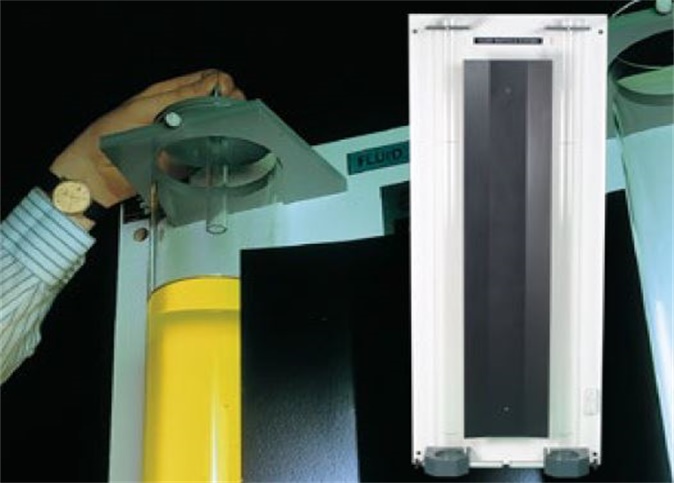The apparatus has been designed to introduce students to the fundamental characteristics of the behaviour of particle/fluid systems, in particular the relationship between the drag coefficients of falling particles and their Reynolds’ number value.
Particles covering a range of sizes and densities are supplied. The experiments are conducted by allowing single particles to fall through a number of different liquids contained in vertical glass tubes. Blockage effects are reduced to a minimum as the largest particle used has a projected area of only 1% of the tube cross-section.
The rate of fall of the particles is determined by timing their passage between two marks on the walls of the glass tubes.
The equipment consists of two precision glass tubes 1.5m long and 93mm inside diameter fixed vertically on a wall-mounted backboard. A guide is provided at the top of each tube to facilitate the introduction of particles with the minimum of disturbance to the liquid. A sliding valve device at the bottom of each tube allows the particles to be removed with minimum loss of liquid.
Observation of the particle movement is aided by a shielded fluorescent light mounted on the backboard between the glass tubes, marks on the tubes enable the rate of fall to be timed.
In addition to the range of spheres, two streamlined shaped objects are supplied to allow comparison to be made between their drag coefficients and those of the spheres.

 Enquiry:hkmarketing@epc.com.hk
Enquiry:hkmarketing@epc.com.hk 











